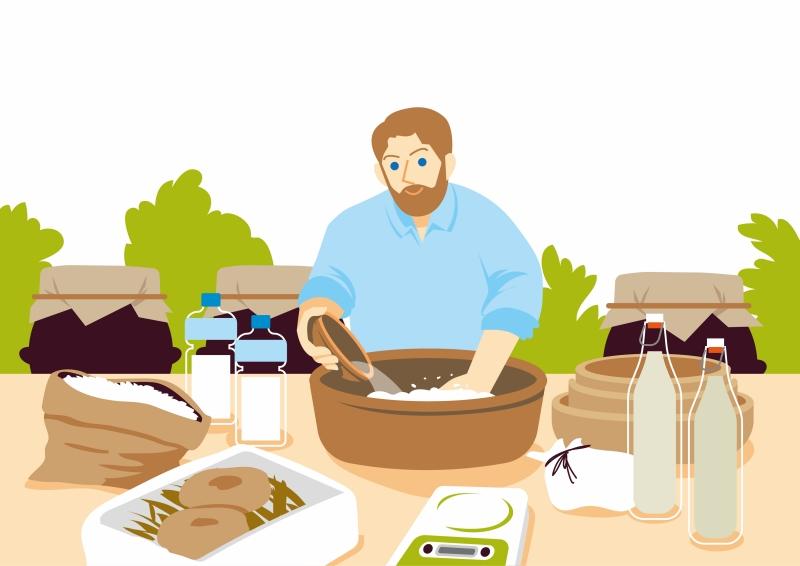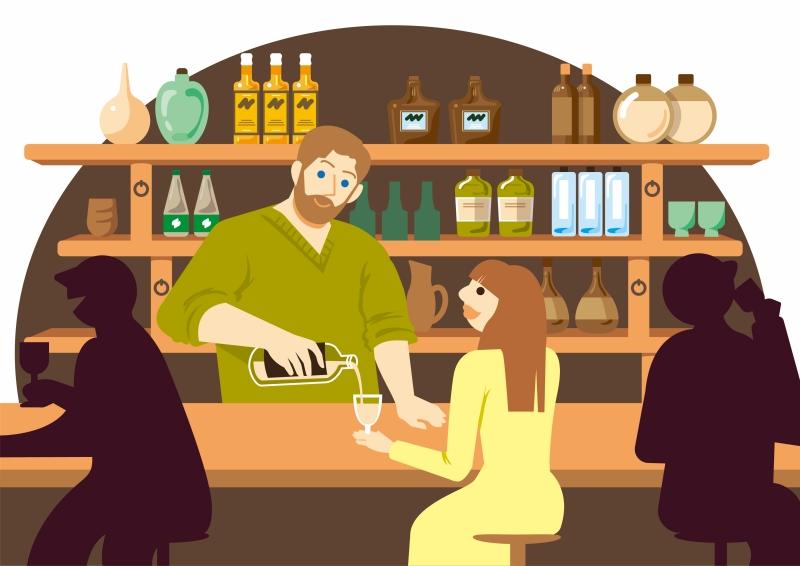
Korean liquor sommelier
I moved to Seoul in 2005 to study Korean history, and hopefully, earn a degree. The adventure saw many late nights fueled by green bottle soju, Korea's mass-produced swill. I watched the flow of suits from one dive bar to the next. I pushed my way into late-night food stalls and dark basements laden with cigarette smoke and cheap beer as often as possible. The goal was to put my hand on the pulse of city life, steep myself in culture as it was then and find a clear snapshot of Seoul's urban chaos. The trip down the rabbit hole and back was captivating. It was somewhere down there that I discovered my love for sool*.
Occasionally between the green bottles and study sessions, I found a few places selling dongdongju, an in-house craft makgeolli (milky rice wine). Dongdong means "to float," and the brew is so fresh that there are grains of rice floating on the surface. It was my first sip of craft sool. It's on the sweet side, creamy yet fresh, boozy with a touch of yogurt-like acidity. It was charming and the beginning of a decade-long chase to find new sips. It took a couple of years before I took my first few steps into the world of brewing.
Learning the basics of brewing

During the Foraged Feast, we placed 20-l pots of house makgeolli at the ends of a long table. I churned out dish after spontaneous dish from the kitchen. For a dinner party of 12 guests, the recklessly liberal booze-to-guest ratio made for an amazing evening. Through each glass, each sip, we realized that sool was among the greats of craft brewing. We felt we were on the edge of an awakening.
Over the years, my basic brews weren't enough to satisfy my curiosity. Where did all these dynamic flavors come from? How does one sool remind me of pineapple jam on toast while another of dashi simmering over a campfire, yet both are made with the same three ingredients: rice, water and nuruk (fermentation starter)? What is nuruk and how does it deliver this unbelievable level of complexity?
I shifted my grand plan away from cooking and invested my time solely into learning the craft of sool. I got my first certification as a sool sommelier in 2018. Captivated, I earned my master distiller and brewer certifications over the next two years. It was here, in our small classes, that I began to understand the magic of sool.
Certifications are for me a starting point. The question is how to build from there? I had an appetite to really understand sool. I wanted to help lift the craft and push it into the limelight, but where? And how? There were no sool sommeliers, only the beginning of something; no solid industry outside of small-batch brewing existed at the time.
Stepping into the industry

As head (read "only") sommelier, I built the pairing program, chose the selection, ran the tastings and curated for the guests. Though ordering directly from "nanobreweries" was an accounting nightmare, it was the only way to keep pushing the selection forward.
Within months, 70% of the guests were ordering the pairing, an unheard-of number in the industry. Our trailblazing experiment was quickly gaining traction. We needed more staff on the floor. We needed sool sommeliers as there weren't any. I trained the general manager and our one server in sool basics and got them on board. Our team got its first Michelin star a year after opening, a first for sool. I needed a larger runway and bigger audience to push the dream forward. I thought it might be time to start trailblazing again.
Leading to the discovery of the perfect sip

Broadcast stations were calling. They wanted to know what sets sool apart. They wanted to show the craft, culture and history. They wanted documentaries, shows and interviews. They needed someone to introduce the perfect sip. And so I traveled, learning under the masters, filming, documenting and sending the message.
The masters are as diverse as the sool they craft. To classify them with one word would be nearly impossible. The closest word I can think of is "survivors." Each meeting led me to new understanding — not merely of the techniques and the science but also of the importance of focus and utter attention to detail.
You see, premium sool isn't pasteurized; there are no stabilizers, preservatives or hops to keep it predictably consistent. The explosion of flavor and aroma has trickled down through generations. Each master's brew has an intentional style, a necessary shape to the character.
The craft and magic hinge on their techniques and nuruk. The masters' craft has survived Korea's prohibition, sometimes literally underground, multiple occupations and rice shortages. We owe them our premium sool and I raise my glass to them for guarding our perfect sips.
It's now been over a decade and what can I say? The momentum is building and curiosity about sool has gone global. The once small classes of nerds now have year-long waiting lists. There are tons of new breweries run by young brewers, sool bottle shops are popping up everywhere, and the appetite to taste age-old tradition is mingling with the need to brew new styles and search for your own perfect sip.
It's here and now, in Korea's moment of wonder, that we're looking at the opportunity to reconnect thousands of years of traditional brewing history and plug it into the present. I've raised glasses with cork dorks, beer nerds, cocktail lovers and master scotch distillers, all of whom have found an appreciation for what sool is. We're on the cusp of a revolution and I'm thrilled to be part of it.
The chase is on and the opportunity is now to find our perfect sip of sool.
*In Korean, sool is a general term meaning "alcohol" but the word is quickly coming to mean the country's traditionally produced craft alcohol. Simple and easy to pronounce and remember, this is a fitting solution to introduce sool abroad.
A native of the U.S., Dustin Wessa came to Korea to study Korean history and culture and later grew fascinated by makgeolli, a milky rice wine made with rice, nuruk (fermentation starter) and water. He has lived in Korea for 16 years and works as a sommelier of traditional Korean liquor.
Illustrated by Jeong Han-sol
Translated by Korea.net staff writer Yoon Sojung